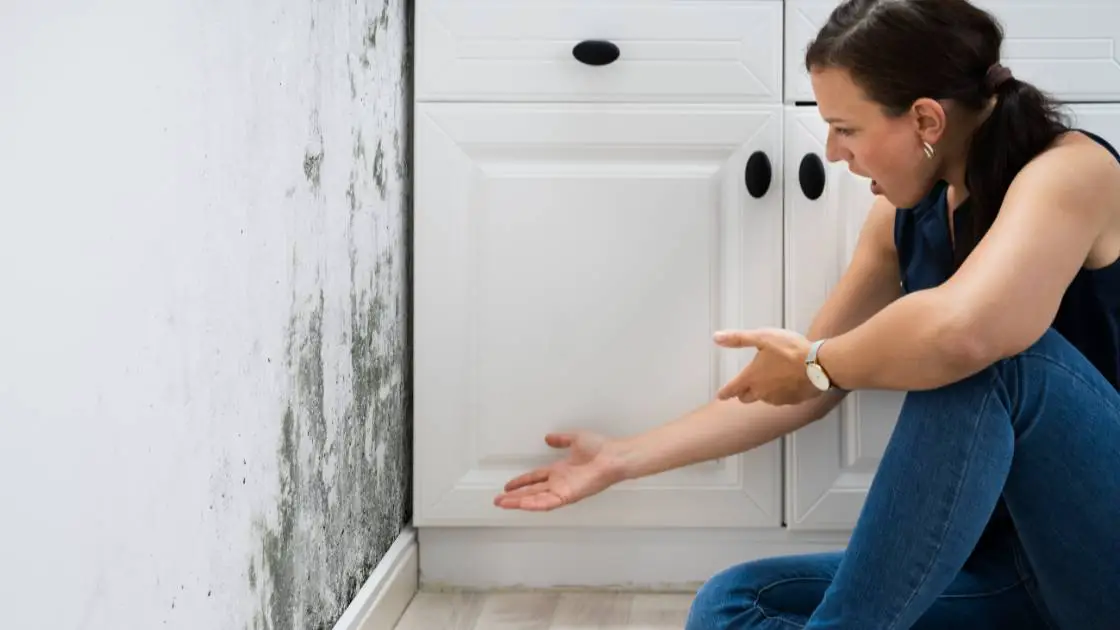Imagine you walk into your home and are hit with that unmistakably musty, damp smell of mold.
It’s happened to me so I get how distressing it can be, especially if you have kids or an elderly relative living with you.
After all, long term exposure to mold, especially dangerous variants like black mold, can have seriously harmful effects on people. If you have respiratory problems to begin with, your concerns will obviously be magnified.
So what’s a tenant to do if their landlord is not addressing a mold issue in the rental home?
In this article, I am going to discuss how long a landlord has to fix a mold problem. I will also cover the legal issues surrounding mold in the home and provide some examples of how various states and localities have dealt with conditions that impact habitability, like mold.
In addition, I will provide some tips on how you can respond to a landlord who is not fixing the mold issue, including some potential legal remedies that may be available to you.
If you don’t have the time to read through it all, here’s a short answer to the question:
Serious mold can impact habitability, so a landlord will likely be required to remove it. As a general matter, landlords have 7 to 30 days to remove mold after being notified by the tenant, however, exact timeframes will often depend on state and local laws, the severity of the infestation, and the availability of qualified mold removal specialists.
Ok, let’s get into it.
The information contained in this post is for informational purposes only. It is not legal advice. You should seek the advice of a qualified legal professional before making any decisions relating to the topics covered by this article.
We may earn commissions from products and services that are purchased or recommended through our website as part of our affiliate partnerships. As an Amazon affiliate, we may earn from qualifying purchases.
Are Landlords Required to Remove Mold?
Before we can get into the question of how long a landlord has to remove mold, we need to answer the more fundamental question of whether a landlord is obligated to remove mold at all.
In most cases, the answer is “yes” if the mold is serious enough to create a health hazard.
Check Your Lease First
The first place to look to see if your landlord is responsible for fixing mold is your lease agreement.
It may already have a provision that requires your landlord to fix mold infestations, so you should definitely read your lease carefully to understand what your landlord is required to do in this situation (and how quickly).
If your lease is silent on the issue, then you will need to find out what the law says about a landlord’s duty to remove mold in the rental.
Let’s turn to that now.
The Implied Warranty of Habitability
What is the implied warranty of habitability?
Despite its fancy name, its premise is simple.
It’s a widely adopted legal principle that promises that your landlord will maintain for you a livable and safe rental property, even if your lease agreement does not spell out that promise. Source.
If the presence of mold is serious enough (I am not talking about a small dot or patch of mold that can easily be blasted away with a simple mold killing spray), it can impact habitability.
This means that a landlord will generally be obligated to correct the situation in order to make good on the implied warranty of habitability.
Of course, if the mold is caused by a tenant’s actions (e.g., leaving the window open during a heavy rain, allowing accumulation of moisture by not cleaning up spills, unreasonable clutter that allows mold to build up, etc.), then the landlord may be entitled to require the tenant to pay for the mold remediation.
Many states and localities have adopted the implied warranty of habitability, but there is wide variation in how they have interpreted it. Let’s get into some examples of how different jurisdictions have addressed this issue
State and Local Laws Around Mold (Incl. Timelines)
New York City Law
Let’s start with the local laws of one of the biggest cities in the US.
The implied warranty of habitability is recognized in New York City and there is a specific regulation addressing mold in rental units.
It is called Local Law 55 and it states that landlords must take reasonable steps to keep the premises free from indoor allergen hazards (which specifically includes mold that can cause harm to humans).
It also requires landlord to take reasonable measures to fix such conditions quickly. Source
NYC has some detailed timelines for addressing mold issues. Here’s a table that lays it out.
| Mold Dimensions | Categorization | Timeline |
| Only visible on grout or tile | Not a mold hazard violation | N/A |
| Less than 10 sq. feet | Non-hazardous mold violation | 90 days from notice |
| 10 sq. feet or more but less than 30 sq. ft | Hazardous mold violation | 30 days from notice |
| 30 sq. feet or more | Immediately hazardous mold violation | 21 days from notice (but extensions possible due to technical difficulties, etc.) |
Note: the above table is a summary – there are exceptions and conditions that exist around false certifications and pre-existing condition that I did not include. You can check out the full text of the rule here.
It is worth noting that, you may also be entitled to relocation while the remediation is taking place in NYC (and in other jurisdictions). Check out my article here on mold relocation and when it is necessary for a more in-depth look.
California Law
Let’s move on to California. California, like New York, recognizes the implied warranty of habitability.
The presence of visible mold growth, as determined by a health officer or a code enforcement officer, can make a dwelling “substandard” if it poses a health risk to occupants, according to the California Housing Code.
Of course, minor mold is exempt if found on surfaces that can accumulate moisture as part of their proper functioning.
If the home is deemed “substandard” due to mold, the owner is required to remediate it. The law requires remediation within a reasonable time, which (in California) is presumed to be 30 days. Source
If the landlord is willing to fix the problem, the tenant may be able to recover relocation costs while this is being done.
If you live in Los Angeles County, for example, the landlord must cover relocation expenses if a tenant is “temporarily displaced” (and it even lays out the amounts based on dwelling size). Source.
A tenant is considered temporarily displaced if they must leave their unit for any of the following reasons until the problem is resolved:
- Necessary repairs
- Rehabilitation (Major upgrades/repairs that increase value to the property)
- Health and safety violations or
- Work that cannot be completed while the tenant remains in the unit.
Mold problems could be addressed in both the third and fourth bullet points.
Obviously, if the mold problem is severe enough, it may be considered a “health and safety violation.” Furthermore, if the remediation is extensive, it may be impossible to complete the work while the tenant remains in the unit.
Now, as you can see, state and local laws can be all over the place on this issue, so it it essential to research and understand what your applicable laws say on this issue. You can do it yourself or hire a lawyer to help you.
For your convenience, here’s our 50 state reference table (including D.C.) that will link you to the official landlord tenant laws of your state.
If you prefer to have a lawyer assist you, I would try JustAnswer. They boast access to thousands of highly-rated, verified real estate lawyers whom you can connect with via their unlimited chat service.
By clicking the banner below, you can get a one week trial membership for only $5, which you can cancel at any time.

What Can I Do If My Landlord is Uncooperative?
If you are faced with an uncooperative landlord, there are a number of options you can pursue.
Contact Local Housing Authority
Your local housing authority can be a powerful ally in making sure harmful mold gets remediate quickly. They are a public entity, so you can contact them without fear of being charged a lot of money for their help.
Enlist Aid of Local Tenants Right Organization
Another great option is to contact your local tenants right organization. They are in the business of championing tenants who need assistance, so they can guide you step by step in what your rights are and what you need to do to make sure you are protected.
Repair and Deduct
You can also explore legal self-help remedies. One of the most common is the repair and deduct remedy. It operates just like it sounds. It is where a tenant can pay for repairs themselves and then subtract the cost from their rent.
It is important to note that, in most cases, there are legal conditions that need to be met before you can repair and deduct and not every state allows it. So you will need to check your laws to find out if its available and, if so, what’s required to do this.
Withhold Rent
This one’s also pretty self-explanatory.
The gist is that you withhold rent until your landlord makes the needed repairs. Again, some states will allow this, while others won’t, so it’s critical to confirm whether your state allows this, or you could be facing eviction suit for nonpayment of rent.
Abandon the Property
A tenant may have the right to abandon their home when it becomes uninhabitable. Normally, renters only choose this remedy if the issue is severe enough and the landlord has not taken any remedial action.
For a detailed look at whether you can break your lease due to mold, check out my full article on the topic here.
Check your applicable laws to see if this is something you can do. You should consult with a lawyer before taking this drastic step.
Wrapping Up
So there you have it – a comprehensive look at how long a landlord has to fix mold issues and some options you can explore if this is happening to you. Hope this has been helpful and happy renting.


